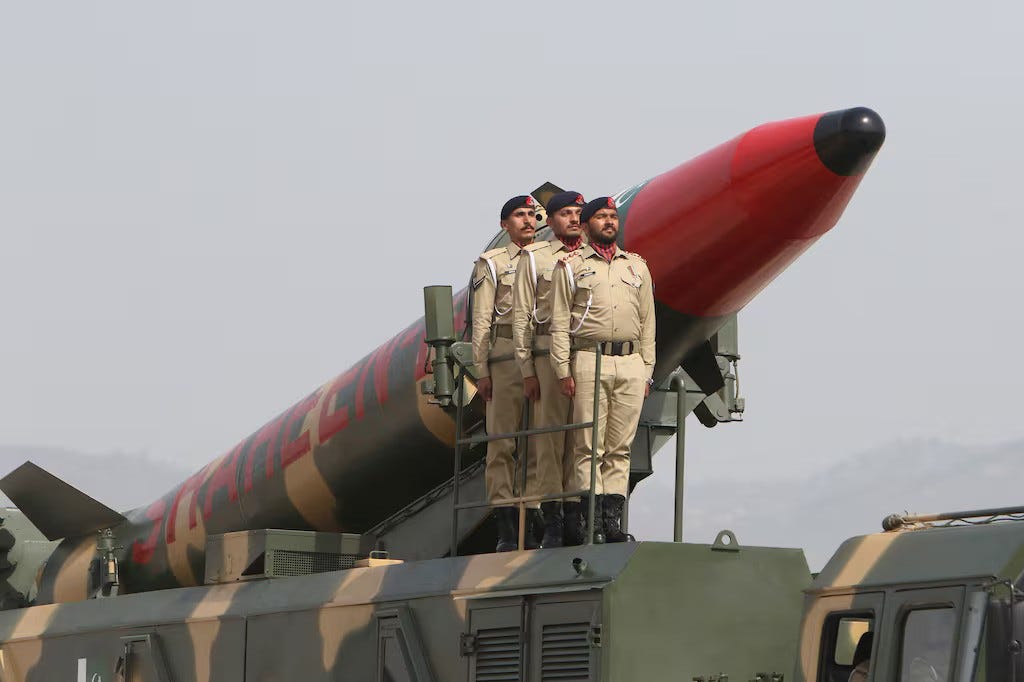By: John Elliott
Last night’s bombing by India of its “Operation Sindoor” targets in Pakistan was inevitable following the terror attack on April 22 that killed 26 holiday makers in a Kashmir meadow at Pahalgam. It was also virtually inevitable that, in order to limit the risk of an outright war which neither country wants, alleged terrorist camps would be targeted rather than military installations.
Pakistan has said that at least 26 people were killed and 46 others injured in the Indian attacks, ominously accusing New Delhi of committing an “act of war,” to which Rajnath Singh, India’s defense minister, responded: “We only hit people who killed innocents and made them pay,” Reports suggested that in India at least eight people were killed by Pakistani shelling.
Pakistan is claiming that it shot down three French-made Rafale jet fighters and two Russian-made planes – an MiG29 and a Sukhoi-30. If true, that is a major blow to India’s military pride, questioning its real expertise, because the Rafales are new aircraft and are seen as the peak of India’s air capability.
It is a tragedy that, while other countries are marking the 80th anniversary of the end of World War II, in which some 74,000 Indian soldiers died and a total of 1.3m served, India and Pakistan are risking another conflagration, one that is the latest result of undefined borders left behind by Britain in 1947.
“The unfortunate coincidence highlights the enduring tension between India’s global possibilities and its regional constraints in the eight decades since World War II, decolonization, and Partition,” wrote C. Raja Mohan, a Delhi-based columnist and strategic specialist, this morning.
India’s prime minister, Narendra Modi, has recently been sidelining Pakistan diplomatically, having failed twice to develop co-operative relations soon after he became prime minister in 2014. The primary dispute between the two countries over Kashmir is not solvable in the foreseeable future but Modi, like other prime ministers before him, had hoped to improve relations on trade and other issues.
His primary focus now is to build India’s economy and its international status as a peaceful and stable major power, while growing closer to the US and trying, in recent months, to improve relations with China. The Kashmir attack is a setback to that approach both in terms of India’s stable image and its need to deal actively with Pakistan. The Islamic Resistance Front, an offshoot of the Pakistan-based Lashkar-e-Taiba, has been named by India.
As prime minister of a proudly nationalist government, Modi has had no option but to strike back after the April attack, even though there is no immediate need to show strength in order to win votes for his Bharatiya Janata Party government in a general election, as there was in a 2019 crisis. Indian aircraft then crossed into Pakistan air space for the first time since a war in 1971. That led to an aerial engagement where an Indian MiG-21 was shot down and its pilot captured.
It would have been totally inadequate for Modi to have just massed troops on the Kashmir Line of Control that marks the unconfirmed border between the two countries, as happened after an attack in December 2001 on the Indian parliament. The Congress government that was then in power responded by moving troops to the Line of Control. As many as a million troops eventually faced each other in a crisis that led in June 2002 to foreign nationals being advised by western governments to move out of Delhi.
Despite belligerent war talk in both countries during recent weeks, including reference to their nuclear weapons, they both want the conflict to be limited, if possible, to India’s strike and Pakistan’s inevitable response.
Whether that is possible remains to be seen. Maybe India’s reported aircraft losses, if correct, will make Modi feel he needs to reassert supremacy by striking again.
This raises the question of the two countries’ real relative military strengths. “If it escalates to all-out war, then Indian superiority will come into play and it will be very strong,” retired Lt Gen Rakesh Sharma, now at a New Delhi-based security think-tank, told the Financial Times. “But in case of limited offensives, they could be close to parity”.
Pakistan’s military is half the size of India’s, and its defense spending was a tenth of India’s US$74.4 billion last year, according to the UK-based International Institute for Strategic Studies. India’s total was Asia’s second largest after China and the world’s sixth largest. Both countries have a nuclear capability with between 160 and 170 warheads each, according to the Arms Control Association
India obtains 40 percent of its defense equipment from Russia, down from 70 percent a decade ago, with the US becoming a major supplier. Pakistan gets 80 percent from China, according to the Stockholm International Peace Research Institute, having switched away from less reliably friendly Western sources. If India goes further in attacking Pakistan than the US wishes, it risks a boycott that could slow down delivery of new orders, but would not affect its fighter aircraft and much of its other equipment that are not of US origin.
Of the two countries, Pakistan, which is unstable politically and weak economically, has more to lose from a sustained confrontation, though its military would probably welcome an opportunity to justify its overwhelming role in the country’s economy and government.
India is currently talking up the confrontation, as it has been doing for days, even ordering civilian drills on what to do in time of war – from turning lights off at night to hiding under school desks. But its government wants peace - providing it is seen to have dealt with those responsible for the terror attacks and any subsequent military action, and that could lead to dangerous escalation.

